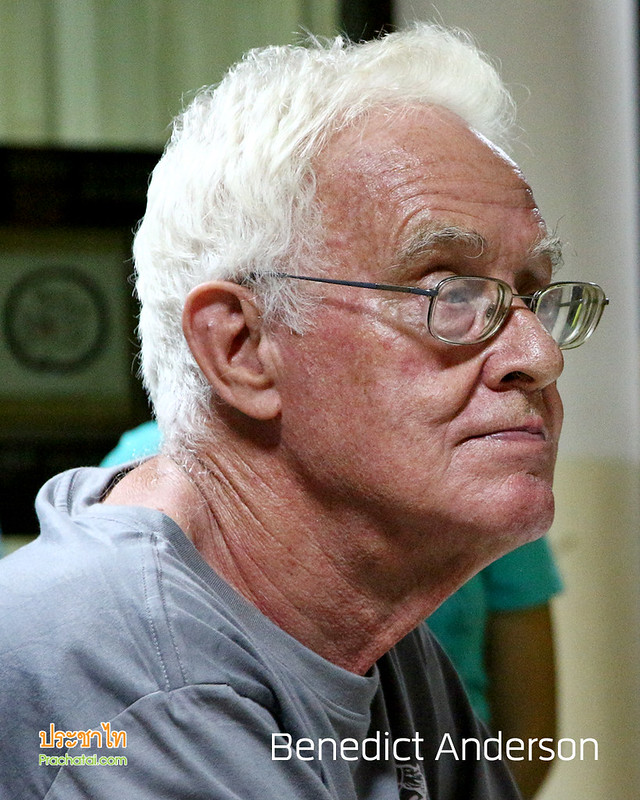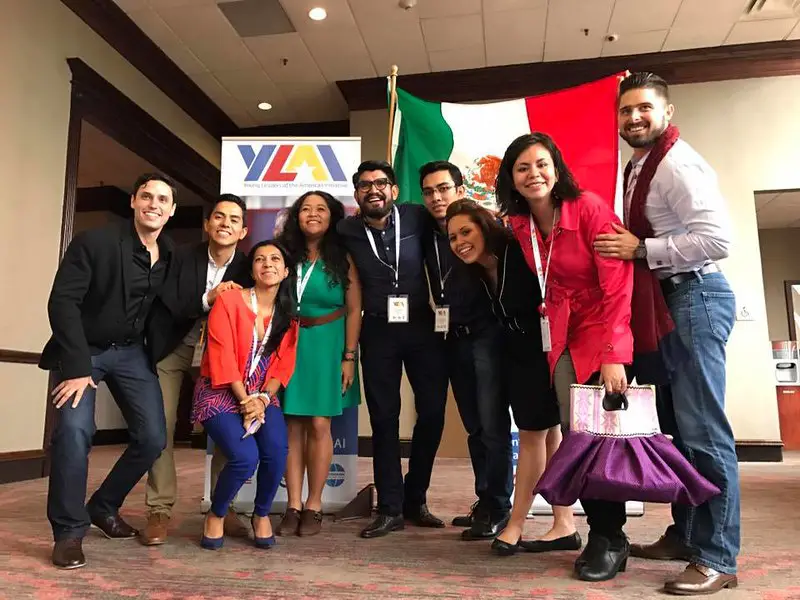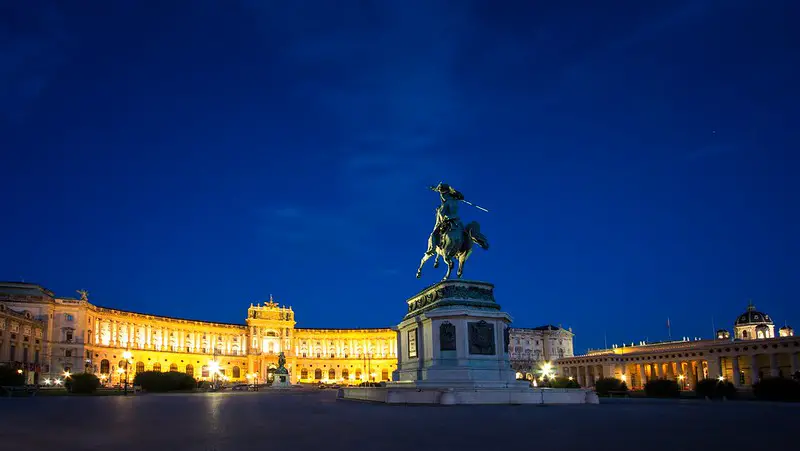For most of history, the larger part of humankind stayed in empires. Different from contemporary nation-states, there were no tough boundaries in empires. Religious change, wars of conquest and Royal marriages were means to grow an empire. This is how the areas now covered by contemporary Spain, Britain, and Italy came to become part of a single empire – the Roman – and Persia, Afghanistan, and India in a different– the Mughal Empire.
During the end of the eighteenth century, a new concept started to appear known as nationalism. This believed that Serbs, Czechs, and Bulgarians shouldn’t stay in one territory led by an Austro-Hungarian royal family; however, they have their own states.
This idea was a new kind of “imagined community.” Every community bigger than villages are imagined in some way because people will never understand more than a few of their fellow members in actual life. Empires usually imagined membership in religious or dynastic terms. But, nations, were not like that. For you to be part of the same community entailed being part of the same nationality, and firstly, that needed to be defined.
Therefore, how did Spaniards turn into Spanish and Algerians Algerian? This is what we will discover in this book chapter as we look at the rise of nationality and nationalism.

Chapter 1 – Nationalism isn’t a religion; however, it’s much more similar to religious belief systems than to contemporary political ideas.
We come into this earth on terms beyond our selection. Our physical skills, genetic heritage, and parents, are all determined coincidentally. Death is the only certain thing in life. These two realities – the contingency of existence and the inevitability of death– have usually burdened humans a lot. Efforts to understand them are at the core of the majority of the traditional belief systems. On the other hand, contemporary ways of thought stay mute on questions that can’t be answered by science, which is the reason why neither liberals nor Marxists have a lot to talk about regarding death. But, Nationalists do.
Let’s take a look at one of the most fascinating symbols of nationalism known as cenotaphs. These are monuments dedicated to unknown soldiers, and it’s this secrecy that gives these ghostly tombs their significance. Since they honor “Nameless Soldiers” who don’t have a personal identity, they turn into symbols of something bigger. They signify the vital sacrifice – dying for one’s nation. Cenotaphs give the impression to propose that the people who sacrifice their lives for something greater than themselves live for life.
In this, nationalism looks like religious worldviews. For instance, religions such as Islam, Christianity, and Buddhism, were able to live for millennia in dozens of various societies since they tapped into human intuition. These religions bring hope that there has to be a deeper significance to the apparently random fluctuations of life. Maybe they refer to it as karma or the afterlife, religions discover this meaning by connecting the dead, the living, and the unborn into an everlasting chain of mortality and regeneration.

With this similarity between religious thought and nationalism, no wonder that the latter appeared just as the former was wavering. After being underestimated for thousands of years, during the eighteenth-century in Europe, religion lost its self-evident plausibility. This was the era of the Enlightenment, an intellectual movement that laid emphasis on human reason instead of the religious tradition. But, the deterioration of religion definitely didn’t, take away the pain to which it had, partly, been a reaction.
In fact, this deterioration left an emptiness at the core of contemporary life. In the absence of paradise, existence looked terribly arbitrary. In the absence of the prospect of salvation and a life in the future, the imagined community of the nation became more charming. However, before we look at what nationalism is, let’s take a deep look at the cultural systems that initiate it.
Chapter 2 – The bond holding big empires and religious communities together was sacred languages.
Imagine this scenario. We’re in Mecca which is Islam’s holiest city and it is the seventeenth century and we come across two pilgrims. One of the pilgrims is from Maguindanao, a sultanate in the Philippines, and the other person is a Berber who came from the mountains of Morocco. These two strangers have never come across each other before, don’t know each other’s native language, and practice different cultural practices; however, they consider each other as “brothers.” Why is this so? The reason is that they share one thing in common–which is Arabic, the sacred language of the Quran and all Muslims.
Three characteristics defined religious and imperial languages such as Quranic Arabic, Chinese, and Latin. Firstly, they were written and read instead of being uttered. Basically, they formed communities of signs instead of communities of sounds. You can notice how this works if you ponder on mathematical signs. For instance, Thais and Romanians, have different names for the “plus” sign in their various languages; however, both of them know the same cross-shaped sign.
Secondly, these were actual languages. Learning these languages wasn’t similar to learning, say, for instance, French. The reason is that the vernacular or common languages weren’t divinely encouraged, such as Latin or Quranic Arabic. They couldn’t offer access to the real nature of things, which is the reason why literate Europeans mentioned turnip farming in German or Swedish; however, they changed to Latin to talk about philosophy and theology.

This is also the reason why a lot of Catholics were shocked at Luther’s idea that the Bible could be interpreted into vernacular tongues. As they considered it, religious facts weren’t transferable in anything except privileged languages.
This viewpoint of the sacredness of specific languages, and their capacity to offer access to the fact affected the manner empires and religious communities, imagined membership. For instance, the Chinese empire’s ruling class accepted the “barbarians” who gradually learned to paint the Middle Kingdom’s symbols – it entailed that, they were getting civilized. It was this knowledge of truth languages that let Mongols to turn into a Chinese, and Turkish nomads to become Muslims.
If anybody could be accepted into these empires and religious communities, then, there was no cause why these groups shouldn’t keep on growing forever. Therefore, what is the reason that religion apparently started to decline during the late Middle Era? Simply put, vernacularization – which is the division of shared truth languages and their substitution by local languages. As we’ll talk about in the following chapter, this process was inspired mainly by capitalism and the printing press.
Chapter 3 – Print capitalism strengthened unique national languages and formed the bases for nationalism.
During the fifteenth century, the creation of the printing press changed communication. Formerly, books had been carefully hand-copied, and libraries regarded themselves as fortunate to have a lot of volumes. Afterward, books turned into mass products. About 20 million copies of books had been printed by the year 1500. Between the years 1500 and 1600, about 200 million more were produced. Francis Bacon, the English philosopher wrote at the end of this remarkable century, printing had transformed the “shape and state of the world.”
He was correct. Immediately, even languages had been changed.
Hence, who was the person printing these whole books? Entrepreneurs were printing books. Publishing of books was one of the earliest kinds of capitalist enterprises to appear in Europe and, just like every kind of capitalism, the business was determined by a restless quest for new markets.
That’s barely unexpected. When printing started off initially, publishers originally appealed to the continent’s little stratum of Latin readers. Soon enough, that market was saturated, though, that left the monolingual majority of the community. In order to appeal to them, you needed to print books in languages they knew. This was what the publishers began to do.
This was print capitalism working, and it brought about the vernacularization of print. Vernacularization of print overlapped with the Reformation and the sixteenth-century movement for the improvement of the Catholic Church. Rome had easily defeated heretical contenders before printing out books. How could they have done this? Easy– it dominated every communication. However, in 1517 during the time that Luther nailed his theses up in German, that had transformed. All thanks to the book business, there was now a bulk market for German-language texts. In just 15 days, the words of Luther had been viewed in all areas of the nation.

This was proof of two things that had never happened before – which are a vernacular print language and a reading public located between the uneducated groups and the small group of bilingual Latin readers. Across the European continent, as this process was replicated print languages were regulated. People who speak a large number of idiosyncratic Frenches, Englishes, and Spanish who might not have understood one another in a discussion, could now interact with each other in print.
Concurrently, readers progressively got informed of the millions of people with whom they shared a language and all those people with whom they didn’t. This was the first thing to imagining a community on the foundation of national features.
Chapter 4 – Vernacular newspapers connected the thought of the people as a group with the same interests.
Religious societies were imagined with sacred languages such as Latin and Arabic. These made a lot of believers to feel connected to each other with their common relationship with God. As we’ve talked about, printing assisted regulate national languages, and this made readerships to start seeing themselves as parts of a secular society.
However, printing generally wasn’t the only thing that prompted this process – it was a certain format.
One time, Hegel the German nineteenth-century philosopher mentioned that newspapers were a replacement for morning prayers for the “contemporary man.” OK, Let’s explain that.
Praying is a personal act done according to standard codes. When people that are faithful pray, they know that what they are doing is concurrently being repeated by thousands or millions, of other believers. But, they don’t have the smallest understanding of who these other people are, however, they are certainly sure of their existence.
Reading a newspaper is related to this type of “ceremony.” Every morning, people who read open their newspapers concurrently. Just like believers at prayer, they are aware that thousands or millions of other people are doing precisely the same thing at that exact time. The fact that these readers as well notice people opening the same newspapers when they pass the subway or when they got to the barber’s shop to cut their hair proves that this imagined world is not just a fiction.
This concurrent act implies that readers see experiences with a shared national lens. For instance, Mexicans might hear of a coup in Argentina; however, they do that with Mexican newspapers instead of their Argentinian counterparts. If these papers don’t mention the situations in Buenos Aires, however, readers don’t believe that Argentina has somehow ceased to live. Instead, they decide that, just like a cast in a novel who vanishes from the scene for a chapter or two, the South American nation will appear again when this advances the plot.

Differently put, the manner that newspapers describe “newsworthiness” forms a sense of national interest. The reason why Mexicans may not be reading about Argentina at the moment is that Argentina is presently not relevant to Mexico.
This sense of a common interest shared by otherwise unknown readers of the exact news in the exact vernacular is at the core of the imagined community of the country. This is what lets, say, for instance, an American, who will never come across over a handful of her 320 million citizens, to be sure of the existence of 319,999,999 other Americans who, similar to her, are a member of something known as “the United States.”
Chapter 5 – In Europe, a linguistic revolution enhanced nineteenth-century nationalism.
For various centuries, Europe considered itself as a single continent. As the successor of the cultural and moral legacy of Christianity and primeval Greece, it thought it had been divinely selected. This entailed that it wasn’t only a superior civilization – it was also the only civilization on earth. However, this triumphalist world view didn’t endure the European “discovery” of the Americas.
During the 1500s, after getting in touch with other civilizations, Europeans got more fascinated in studying languages. At first, this emerged from necessity – nevertheless, sailors and merchants, required to talk with the people they met on their trips.
But, over time, the study of old languages such as Sanskrit and Egyptian hieroglyphics brought about a few astonishing findings. The antiquity wasn’t just more diverse; however, a lot of civilizations were very older than the Greek and Jewish worlds on which Europe’s culture had been taken from. In a diverse world, people agreed that Europe was basically one of the various civilizations and not essentially the best one.
This finding initiated the first scientific topic that observed evolution as its focus – philology, which is the comparative study of linguistic progress. The philological change that came after bought about the end of sacred languages such as Hebrew, Greek, and Latin. These languages asserted to be exclusively old and divinely encouraged. Because that this idea had been discredited, they would relate as the same with their contenders, the plebeian vernaculars.

However, if every language had the same common, worldly status, weren’t they all equally worthy of study and respect? The response to that for Europeans in the nineteenth century was a loud “Yes.” This marked the start of the lexicographic revolution as philologists and grammarians began assembling vernacular dictionaries and gathering of literary histories and folklore.
The more the scholars checked these vernacular languages, the more influenced they got that their speakers built exceptional communities. This finding was the foundation in which nationalist organizations claimed their independence.
For instance, the first Ukrainian grammar emerged in the year 1819. In just ten years, the poet and folklorist Taras Shevchenko Ukrainian had been formed into a contemporary literary language. In Kyiv, the first Ukrainian nationalist organization was established there in the year 1846. During the 1860s and 1870s, where American-educated Christians regulated modern Arabic in Beirut, then to Oslo, which was where the first-ever Norwegian dictionary was printed out in 1850, this pattern was repeated. The systematization of vernaculars wasn’t only a means of visualizing the national community – it was a means of bringing it to existence.
Chapter 6 – The emergence of nationalism undermined Europe’s multinational empires since its rule was not compatible with imperial rule.
Think of a Czech nationalist – we’ll refer to him as Antonín – during the late nineteenth-century Prague. He speaks the state’s official language which is German; however, he likes to use his mother tongue. He reads Czech newspapers and novels, and his best composers are Smetana and Dvořák, the Czech patriots. What about his political aims? Probabilities are, the top of his list would be being governed by fellow Czechs. This is the reason why Antonín is an issue for the people calling the shots.
During Nineteenth-century, Europe was a patchwork quilt of multinational empires. For instance, the Habsburgs in Vienna, led by a huge area extending from the Alps to the Carpathians that had Hungarians, Czechs, Slovaks, Croats, Germans, and Italians. The people speaking French in Romanovs, Saint Petersburg managed a bigger empire comprising of Finns, Armenians, Letts, Tartars, and Russians.
The philological revolutionaries we talked about in the former chapter introduced these empires with a severe problem. Consider the Habsburgs. During the 1780s, Emperor Joseph II chose to change the state language from Latin to German. This was a rational decision. Different from Latin, German was a contemporary tongue already conversed by a lot of Austro-Hungarian citizens with huge literature within its reach. This made it a strong contender to unite the empire.

However, nationalists such as Antonín didn’t consider it like that. The more the Habsburgs pushed German, the more Croats, Hungarians, Czechs, as well as others believed that the state was supporting itself with the interests of one minority and disregarding their own interests. Neither was reversing the situation a choice. For instance, if the Habsburgs changed to Hungarian, they’d basically form a different group of offended nationalities that now comprised of German-speakers.
Some empires tried to prevent this dilemma by forming an official, or top-down, nationalism related with the biggest ethnic group. Then, this was enforced on minorities, who were the heroes of famous, or bottom-up, nationalism. The Russian empire did this during the late nineteenth century. It enacted a policy known as Russification, that prohibited minority languages and the Russian was chosen as the language of the state, culture, and public life. It was a dead-end, and huge discontent and a set of open rebellions came after.
No wonder that this issue turned to be a thorn in the side of empires. The notion at the core of nationalism is that nations must be directed by people who resemble and talk like them, and this directly opposes the reasoning of multinational empires.
Chapter 7 – The intellectuals of African and Asian used European ideas and their experiences of colonial rule to form their own independent countries.
Europe’s multinational empires were destroyed during World War 1. The Austro-Hungarian, Russian, and Ottoman empires vanished in the year 1922. On the continent, they were changed by newly independent countries. The League of Nations, a group that considered those nations as the new international standard, now handled the diplomatic relations formerly ran by imperial bureaucracies which left the non-European world. What would have occurred to the European empires’ colonies during the era of nationalism?
Soon enough, an answer came about.
Three factors assisted Asians and Africans in the colonial world to think about their future countries.
The technology was the first factor. Between the years 1850 and the early twentieth century, transportation and communication improved a lot. Telegraph cables permitted concepts to move from metropoles to remote outposts quickly, and new steamships and railways brought about an exceptional rise in physical mobility. This eventually permitted Asians and Africans to form colonial pilgrimages from their colonies to imperial capitals in Europe. They got revolutionary political ideas there, and also came across their counterparts from other colonies, and got to know about European efforts for national independence.
The second factor was that the education systems in colonies were usually extremely centralized. For instance, in the Dutch East Indies, students from thousands of distinct islands got related guidelines from the same textbooks. As they moved forward through the system, they were directed into an ever-smaller number of schools until they got to one of two cities that received universities – Batavia, the present Jakarta, and Bandung. This experience combined gave an impression in these young Indonesians’ minds that the archipelago where they stayed was a single, united area, but it diverse its dwellers.

The last factor was that European racism strengthened the notion that colonial subjects in a specific area were compatriots. Since colonial officials barely cared to discriminate between different Indian or Indonesian groups, and rather treated everybody as a hated “natives,” these subjects usually saw themselves as parts of a collective known as “India” or “Indonesia.”
Altogether, these factors formed a new class –known as the bilingual, Western-educated intelligentsia. The members of this class were well-versed in the history of European nationalism and had gone through the colony as a unified territory occupied by people who had the same basic characteristic.
This was the class that would direct countries as different as Angola, Egypt, and Vietnam to independence between WWII and the 1970s.
Imagined Communities: Reflections on the Origin and Spread of Nationalism by Benedict Anderson Book Review
Nationalism views nations as restricted communities that consist of people who have the same interests and characteristics, and especially, language. It isn’t a political ideology, but– it’s a cultural system related to religious beliefs, giving a sense of continuity in a contingent world. At first, Nationalism was the result of “print capitalism.”
As booksellers looked for new markets, they left their sacred languages such as Latin and made use of vernaculars such as German. This lets groups of readers think of communities with shared interests in certain areas. The standardization of vernacular languages and the rise of newspapers then connected this sense of shared national interest, finally undermining multinational empires in Europe and in the broader world.
